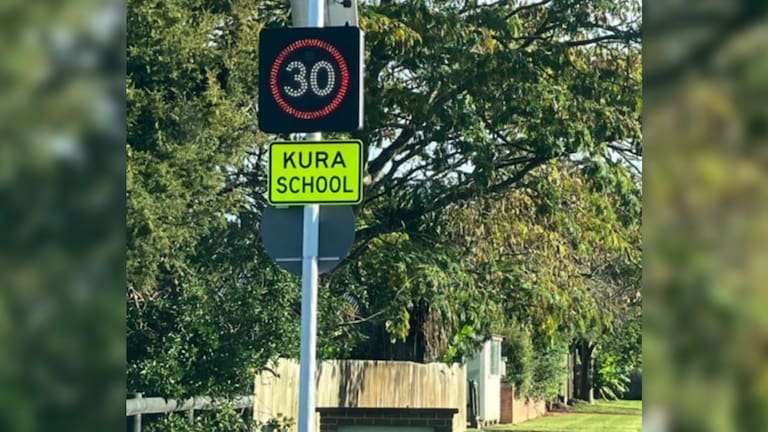The Government has revealed its direction for speed limit rules around the country, including those around schools. Here’s what’s coming to a school run near you.
The Government’s 100-day plan included a promise to stop "blanket" speed limit reductions, which Transport Minister Simeon Brown moved to do in December last year.
At that time, he removed the requirements for NZTA Waka Kotahi and councils to continue implementing speed limit reductions and promised to share the Government’s plans for what would be happening instead.
Today, Brown and Minister for Regulation David Seymour revealed those plans. These included a change to what the previous government had planned for roads around schools and kura.
What did the last government do?
In its Land Transport Rule: Setting of Speed Limits 2022, the previous government said at least 40% of schools should have lower speed limits set by June 30 this year, with those speed limits set around all schools by the end of 2027.
This was one of the speed limit deadlines that Brown removed last year.
What is the current government planning?
The new rule will mean variable speed limits will be in place around schools during pick-up and drop-off times instead.
A variable speed limit is where the maximum speed limit can change between 30km/h and 100km/h at certain times of the day. In this case, the speed limit would be lowered around those school pick-up and drop-off times.
Brown said the variable speed limit approach was similar to that used in parts of the United Kingdom, Australia and the United States.
“Implementing variable speed limits on roads approaching schools during pick-up and drop-off times, rather than permanent reductions, will keep young New Zealanders safe when they are arriving at or leaving school,” he said.

What do road safety campaigners think of this move?
The Government had been signalling this change for some time and it was not well received by road safety advocates.
In an opinion piece for Newsroom this week, Dr Timothy Welch from the University of Auckland highlighted evidence from Healthy Auckland Together that showed a vulnerable road user being hit by a car at 60km/h had “no chance of survival”. He said a 60km/h speed is common on a road where a speed limit is set at 50km/h.
Welch also pointed out that variable speed limits don’t protect students who may be travelling to and from school early or late or visit school grounds at the weekend.
What else is the speed limit plan?
Brown said its new rule would allow 110km/h speed limits on new and existing Roads of National Significance.
He said moving away from blanket speed limit restrictions would help the economy.
“It is critical that we have the right settings in place to boost economic growth and improve road safety, enabling Kiwis to get to where they want to go, quickly and safely,” he said.
“The previous government's untargeted approach resulted in blanket speed limit reductions across the country, rather than targeting high crash areas of the network. The new Rule will lead to blanket speed limit reductions being reversed by the end of next year, except where it is unsafe.”
The new speed limits rule will be released for public consultation by the middle of this year.






















SHARE ME